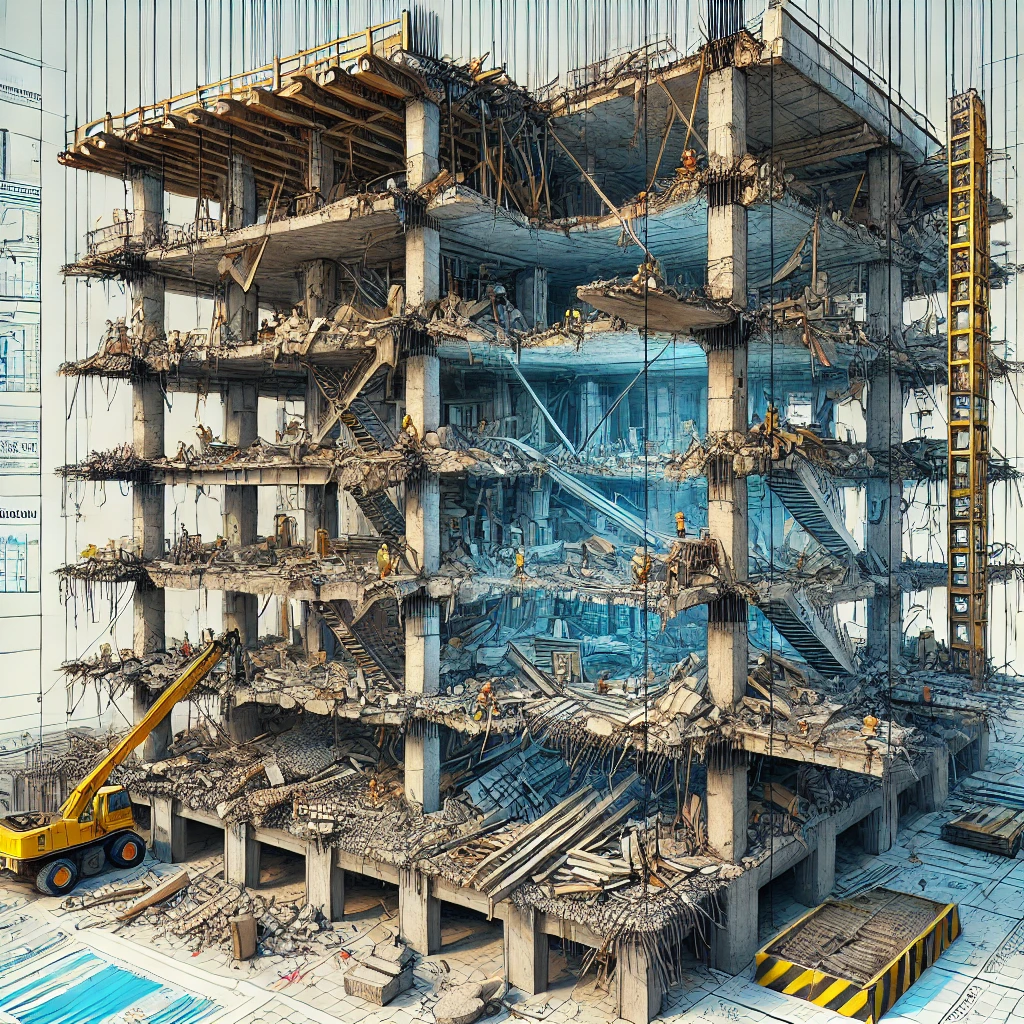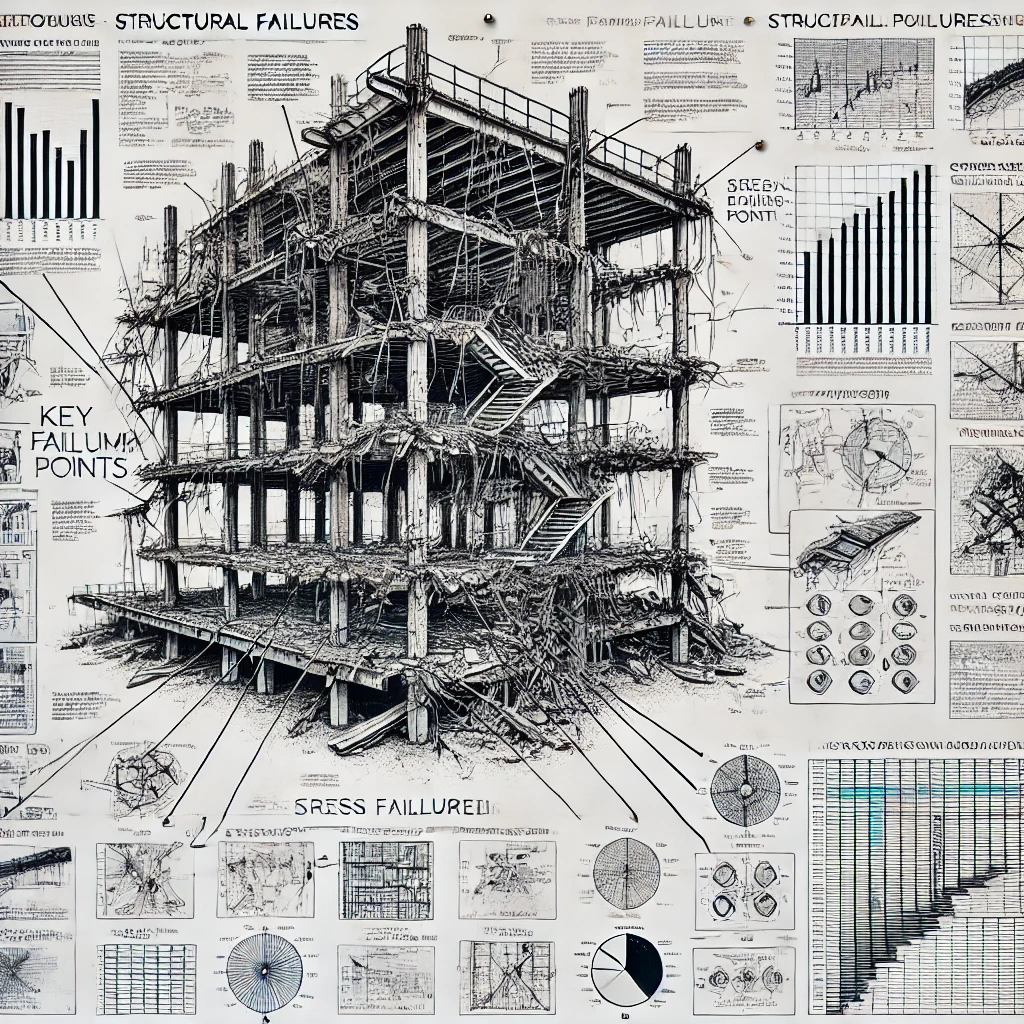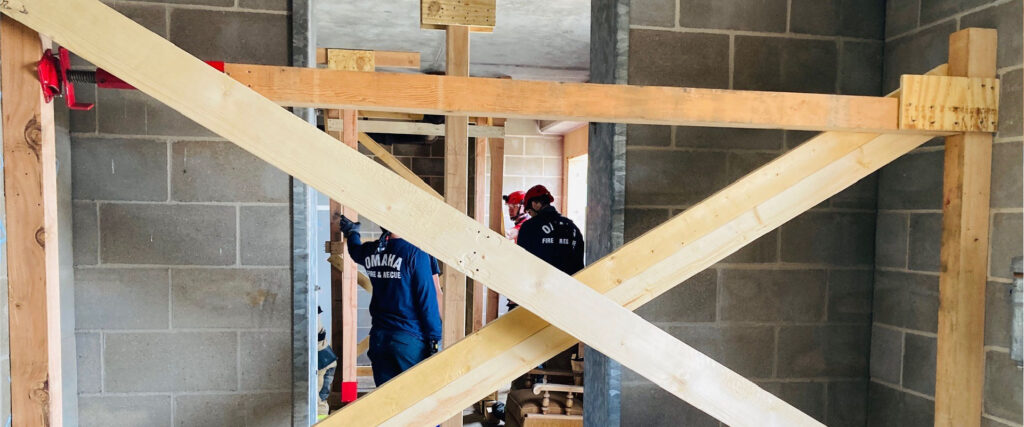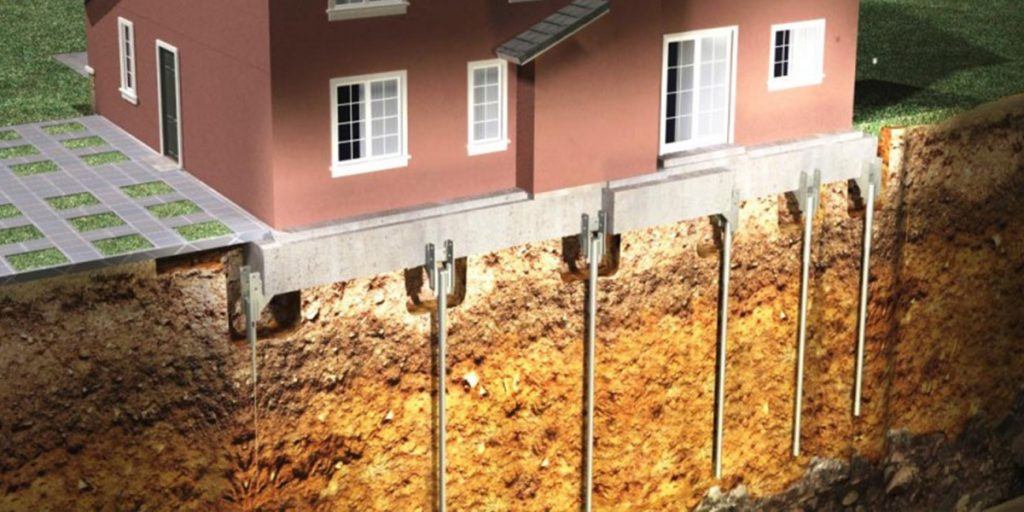This article outlines engineering techniques to prevent building collapses, from emergency stabilization to long-term reinforcement and retrofitting for structural safety.

A collapsing building represents one of the most serious threats to human life and property. Whether due to structural failure, natural events, or human error, buildings in distress can rapidly turn into disasters if timely actions aren’t taken. The warning signs may start subtly—cracks in the walls, slight shifts in the foundation, or unusual sounds. Over time, these seemingly minor issues may evolve into major structural failures that threaten the integrity of the entire building. Immediate intervention is critical when signs of collapse are detected.
The causes of building collapse can vary. In some cases, poor construction practices lead to weakness in the building’s structure, which may only become apparent years later. In others, external forces such as earthquakes or severe weather can strain the building beyond its capacity. Regardless of the cause, the key lies in rapid identification of the issue and employing specialized techniques to stabilize the building. For structural engineers, the challenge lies in assessing the extent of the damage and selecting the most appropriate methods to avert a collapse.
When faced with a collapsing building, the response must be swift and methodical. Understanding the signs, determining the links in the chain of events leading to failure, and executing solutions are all essential. This article explores the techniques used to prevent disaster, drawing on insights from professional engineers and real-world case studies.
Understanding Building Collapse
Building collapse occurs when the structural integrity of a building fails, leading to its partial or complete destruction. This can happen due to a variety of reasons such as poor design, substandard materials, inadequate maintenance, or natural disasters. The result is often a rapid failure of critical components, such as beams, columns, or walls, which can cause the entire structure to crumble. When buildings collapse, they create a cascade of failures, where one section’s weakness contributes to the failure of another.
Collapses can happen suddenly or gradually, depending on the root cause. Some buildings experience slow, visible signs of failure, such as sagging floors or widening cracks, offering time to intervene. However, in cases like earthquakes or landslides, the collapse can be instantaneous, leaving no time for preventive measures. For those working to avert a collapse, recognizing the warning signs is vital. Engineers must understand how forces are distributed throughout the structure and determine which elements are most vulnerable to failure.
To save a collapsing building, a series of steps must be followed. Identifying the cause of the collapse is the first task. Then, the weakened components of the building must be supported and reinforced. This process often involves using forensic analysis techniques to create a clear picture of the building’s condition and pinpointing areas where immediate action is needed.
Identifying Signs of Collapse
The first step in preventing a building collapse is identifying the early warning signs. Some of these signs include cracks in walls, buckling columns, uneven floors, or doors and windows that no longer fit their frames properly. Such defects often signal that parts of the building’s structural system are under stress and are beginning to fail.
Monitoring the building’s condition using tools like laser scans and strain gauges can provide valuable data. Engineers analyze this data to determine how the building is behaving under load. In some cases, movement sensors can detect shifts in the building’s foundation or structure, giving early indications of instability. By closely tracking these movements, experts can estimate when and where a failure might occur.
Forensic analysis charts play a critical role in this process. These charts allow engineers to map out the sequence of events that led to the failure. By plotting these events, they can uncover patterns and determine the weakest points in the structure. These charts also help engineers decide the best course of action for halting the collapse and stabilizing the building.
Forensic Analysis and Root Cause Determination
When a building shows signs of impending collapse, forensic engineers are called in to investigate. Forensic engineering is the application of engineering principles to determine why structures fail. This discipline involves analyzing evidence, identifying defects, and understanding the underlying causes of the failure. In many cases, forensic engineers use a technique called “failure chain analysis,” which helps them trace the sequence of events leading to the collapse.

One of the most useful tools in forensic engineering is the forensic analysis chart (Figure 1). This chart is a graphical representation of the sequence of events leading to the failure. It shows how each link in the chain is connected and allows engineers to visualize the interactions between different components of the structure. With this information, they can make informed decisions about how to stabilize the building.
Failure chain analysis involves identifying the “links” or individual events in the chain that contributed to the collapse. These links might include poor design decisions, material defects, improper construction practices, or external factors like environmental conditions. Each link in the chain represents a step in the process that led to the building’s collapse. By understanding the sequence, engineers can determine which links can be removed or strengthened to prevent further collapse.
Stabilizing the Structure
Once the failure chain is understood, engineers must take action to stabilize the building. The first step is often shoring up the weakened parts of the structure (Figure 2). This involves using temporary supports, such as steel beams or scaffolding, to hold up sections of the building that are at risk of collapse. These supports help distribute the load more evenly and reduce stress on the damaged components.

In some cases, the building may need to be partially evacuated to ensure the safety of the occupants. This allows engineers to work on the most critical areas without putting people at risk. Temporary reinforcements are then installed to prevent further deterioration while a more permanent solution is developed.
Concrete injections and fiber-reinforced polymers are among the methods used to reinforce the weakened sections of a building. These materials add strength to the structure without requiring extensive demolition. They can be applied directly to the damaged areas to help restore the building’s integrity. However, these methods are not a permanent fix; they are designed to buy time while more comprehensive repairs are planned.
Strengthening the Foundation
A building’s foundation is often the key to its stability. When a foundation fails, the entire structure is at risk. In cases where foundation issues are contributing to the collapse, engineers may need to reinforce or even replace sections of the foundation to stabilize the building.
One common method of foundation repair is underpinning (Figure 3). This involves strengthening the foundation by installing additional supports underneath it. These supports are often driven deep into the ground, where they can reach stable soil or bedrock. By redistributing the weight of the building to these new supports, engineers can prevent further sinking or shifting of the foundation.

In some cases, engineers may also use soil stabilization techniques to strengthen the ground beneath the building. This can involve injecting grout or other stabilizing materials into the soil to improve its load-bearing capacity. By stabilizing the soil, engineers can prevent future foundation problems that could lead to further collapse.
Using Modern Technology
Modern technology plays a critical role in saving collapsing buildings. Advanced computer models and simulations allow engineers to analyze the structure in ways that were previously impossible. These tools can simulate how the building will behave under different loads, providing insights into which parts are most at risk.
Laser scanning technology is often used to create precise 3D models of the building. These models can reveal hidden weaknesses that may not be visible to the naked eye. Engineers can then use these models to plan their repairs more effectively.
Drones and other remote-controlled devices can also be used to inspect hard-to-reach areas of the building. These devices can capture high-resolution images and videos that help engineers assess the damage without putting themselves in danger.
Long-Term Solutions
While immediate stabilization is important, long-term solutions are critical to ensuring that the building does not collapse in the future. After the initial crisis is averted, engineers must develop a comprehensive repair plan. This often involves reinforcing key structural elements, repairing damaged components, and addressing the root cause of the collapse.
For buildings that have been severely damaged, retrofitting may be required. Retrofitting involves adding new materials or technologies to strengthen the building. (See: Strengthening of Existing Structures – A Guide to Various Methods). This might include adding steel braces, reinforcing concrete beams, or upgrading the foundation. Retrofitting is particularly important for older buildings that may not have been designed to withstand modern loads or environmental conditions.
Preventing Future Disasters
The best way to save a collapsing building is to prevent it from reaching the point of collapse in the first place. This requires regular inspections and maintenance. Building owners and managers must be vigilant in monitoring the condition of their structures and addressing any signs of distress immediately.
In addition to regular inspections, buildings should be designed and constructed to withstand the loads they will face over their lifetime. This includes considering factors such as seismic activity, wind loads, and soil conditions. Modern building codes and standards are designed to ensure that buildings can withstand these forces, but they must be followed carefully to prevent future disasters.
Conclusion
Saving a collapsing building requires a combination of quick action, expert analysis, and advanced technology. By identifying the signs of collapse early, using forensic analysis techniques to understand the failure chain, and employing modern stabilization methods, engineers can prevent disaster. However, the key to long-term success lies in addressing the root causes of the collapse and ensuring that the building is properly maintained going forward.
With the right approach, even the most at-risk buildings can be saved from disaster, protecting both lives and property.
Also See: Forensic Engineering – Guidelines for Failure Investigation
Sources & Citations
- Institution of Structural Engineers (IstructE). “Techniques for Stabilizing Collapsing Structures.” Published in the official IstructE engineering video series.
- Jones, Michael. Forensic Structural Engineering Handbook. McGraw-Hill Education, 2020.